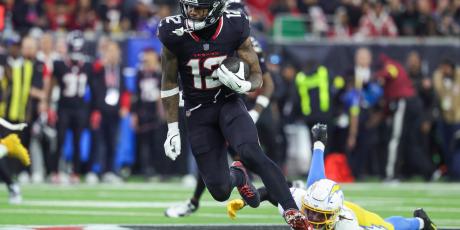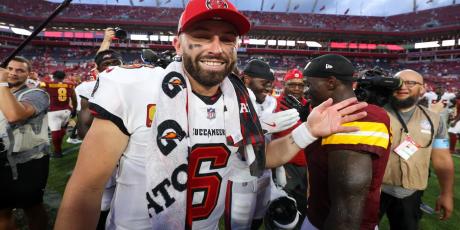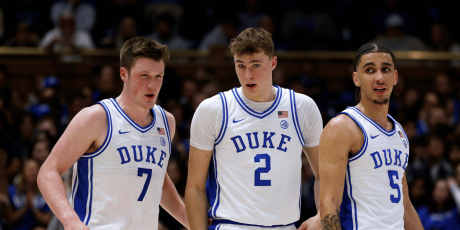How to Balance Running Back and Wide Receivers in Best Ball
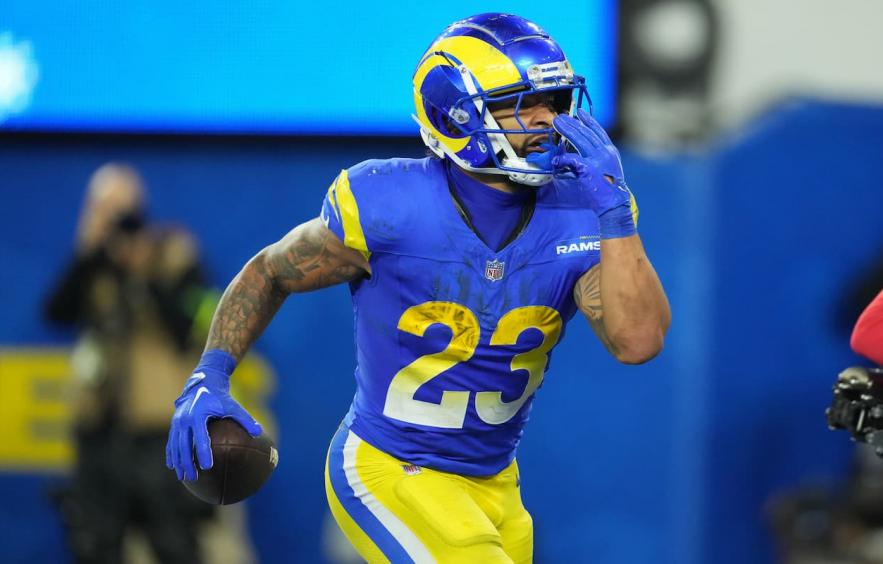
To this point, I have written up tight ends and quarterbacks. Getting into historical performance, spike weeks, specific bets, and the high level of individuality between seasons at these positions. The latter is where running back and wide receiver differ the most. Instead of requiring players to start one, best ballers must start three wide receivers and two running backs. Also, most weeks one of them fills the flex, occasionally tight ends fill the flex but it is infrequently optimal to do so.
Applying data across years and looking at market dynamics across time is much easier because of how many relevant receivers and running backs are in the league. No teams try to hide these positions or avoid utilizing them. Wide receivers and running backs are also more likely to define seasons. With more relevant players, there’s a higher chance of one or a few fully breaking out and others letting drafters down massively. Identifying who will break out is difficult because we’re aiming for outliers. Drafting much of a player who disappoints does not necessarily mean drafters picked poorly because at the time the bet they made on the player may have favored them. Leaning into uncertainty and wide ranges of outcomes tends to pay off more for hits than it does punish for misses.
Historical Performance
Running Back
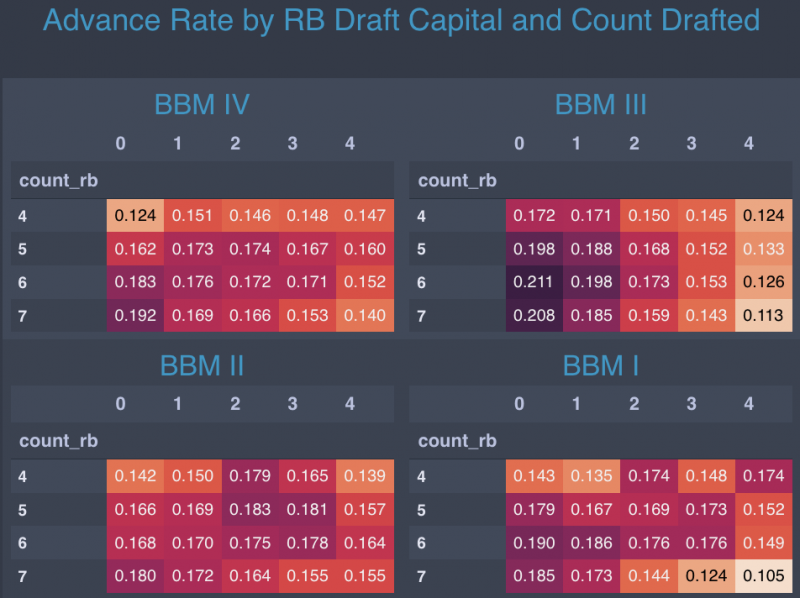
One-off players and injuries are less likely to define seasons and this can be seen quickly by glancing at the pivot tables above. Data trends within a year will always move between years as the market updates. Market shifts take time and happen over multiple seasons though, shocks and jumps are unlikely to occur over one offseason.
There are times when investing in early running backs has looked fruitful in the aggregate, but every year has seen low running back investment builds meet or exceed expectations. Waiting on running back and making a variety of best has treated drafters well over the last four years. This is true even though the market updated significantly over the years. In the first round of BBM, I was almost entirely running backs. BBM IV’s first two rounds only included a handful of running backs.
This means the definition of each draft capital bucket has updated significantly over the years. Keeping analysis relative to the market at the time makes the takeaways more applicable year over year.

- All Premium Content
- The most Accurate Rankings Since 2010
- Expert Draft Picks w/DraftHero
- Highest Scoring Lineup + Top Available Players w/LeagueSync
- ...and much much more

